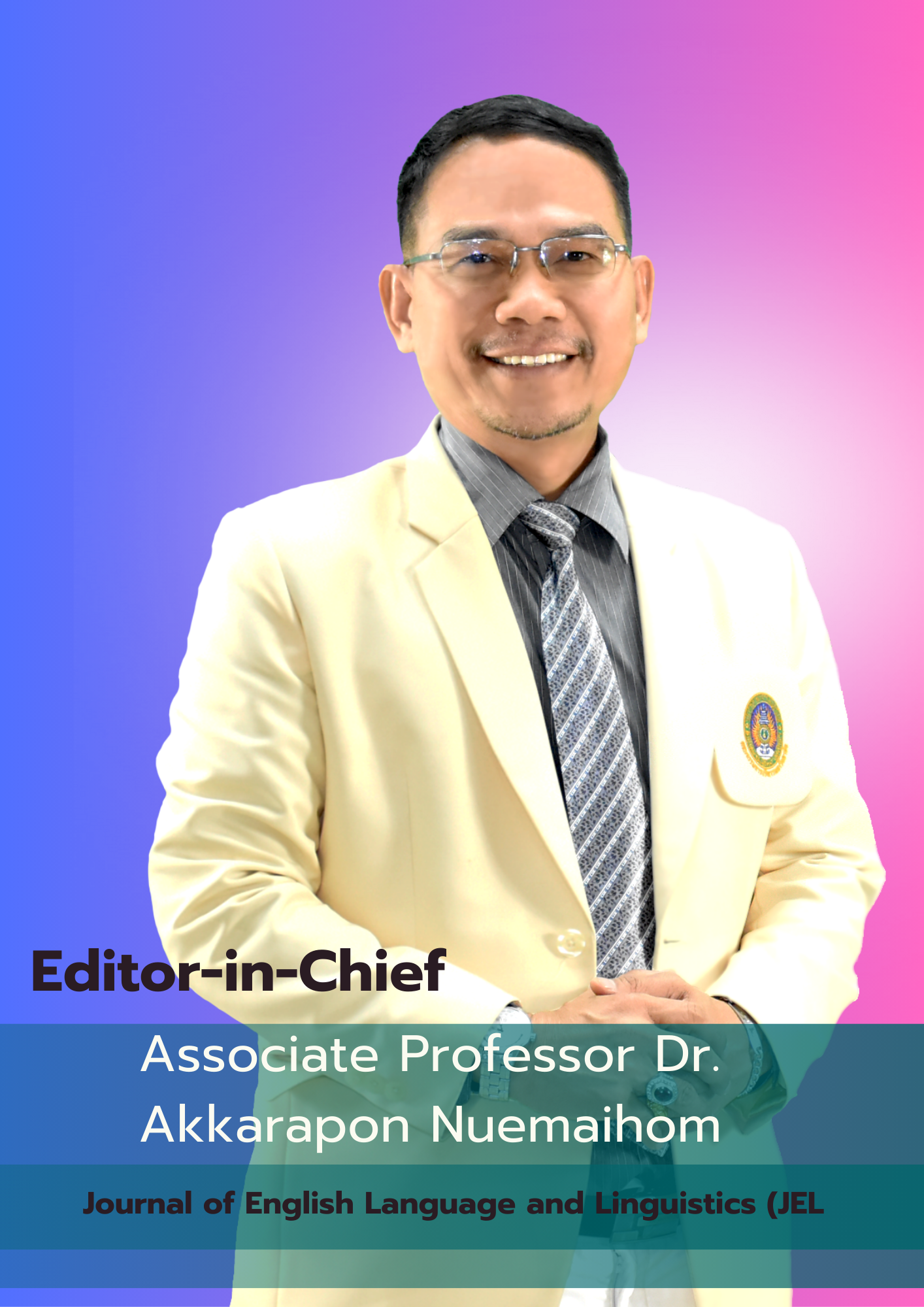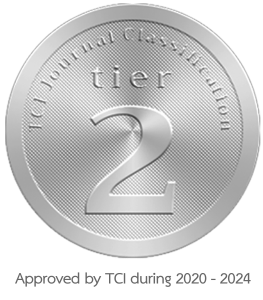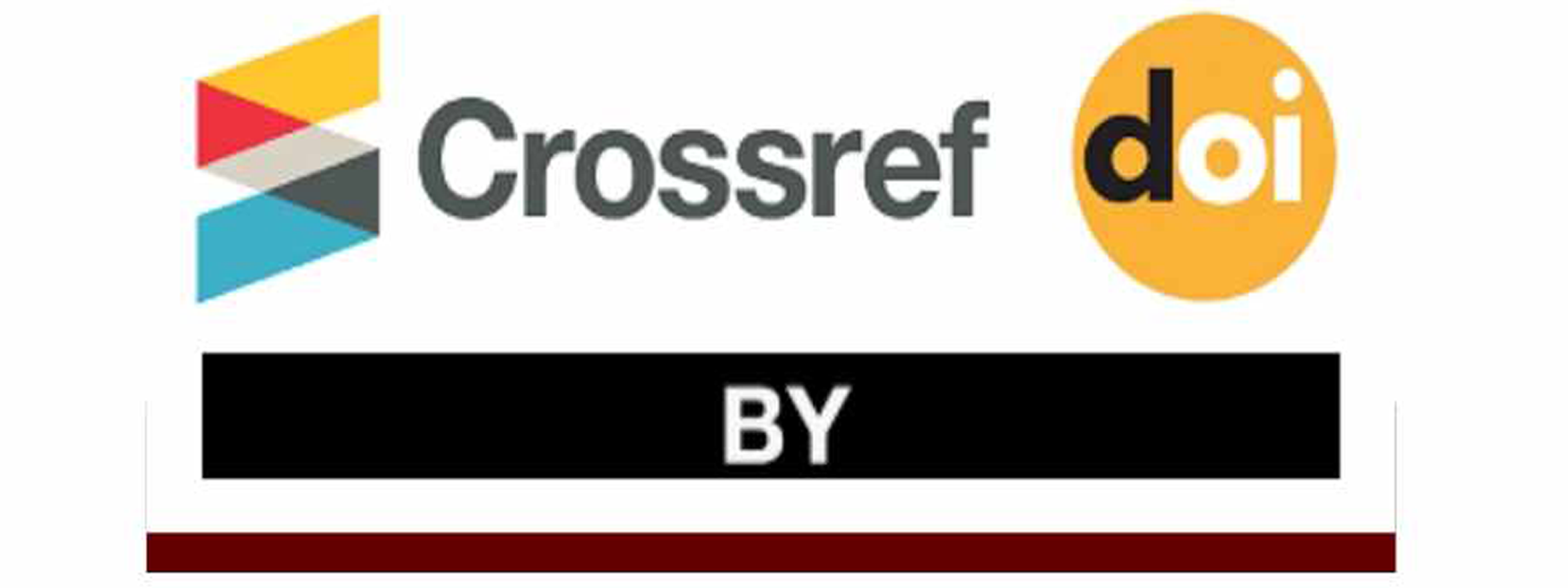Rhetorical Moves and Metadiscourse in English Abstracts of Research Articles and Masters’ Theses
DOI:
https://doi.org/10.14456/jel.2023.13Keywords:
Rhetorical structure; Metadiscourse; Abstract writing; Research ar Thesis writing; BusinessAbstract
Rhetorical communication and metadiscoursal devices are important in understanding the rhetorical negotiations involved in academic texts. Research studies comparing these two phases of the analysis of English abstracts of research articles and Masters’ theses written by non-native English writers are limited. Three corpora of abstracts in the field of business were analyzed for their rhetorical moves by using Hyland’s (2000) model and metadiscourse markers in the moves by using Hyland’s (2005) metadiscourse taxonomy. Some striking similarities and differences were found among the three sets of data. Purpose, Method, and Product moves were found with different degrees of occurrences, while the Introduction and Conclusion moves occurred infrequently. The employment of interactive devices outnumbered the interactional devices. Transitions and self-mention were the most frequent markers in the international corpus, while frame markers and attitude markers were found extensively in the two Thai-based corpora. The findings of the analysis of the two related genres shed light on the genre variations which were derived from genre-specific features. This can be ascribed to the dynamic nature of research articles as a professional genre and theses as an educational genre. Additionally, the study provides inexperienced non-native writers with a deeper understanding of the rhetorical structure and metadiscourse devices realized in research articles and theses.
References
Alsharif, M. (2022). Rhetorical move structure in business management research article introductions. Journal of Language and Linguistic Studies, 18(4), 1268-1283. Amidon, S. (2008). The learning history: Analyzing an emerging genre. Journal of Business Communication, 45(4), 451-482. Anthony, L. (2011). AntConc (4.2.0). http://www.laurenceanthony.net/software.htmlCao, F., & Hu, G. (2014). Interactive metadiscourse in research articles: A comparative study of paradigmatic and disciplinary influences. Journal of Pragmatics, 66, 15–31. Dafouz-Milne, E. (2008). The pragmatic role of textual and interpersonal metadiscourse markers in the construction and attainment of persuasion: A cross-linguistic study of newspaper discourse. Journal of Pragmatics, 40, 95-113. Ebadi, S., Salman, A. R., Nguyen, T.T. L., & Weisi, H. (2019). Rhetorical structure variations in abstracts and introductions of applied linguistics master’s theses by Iraqi and international students. Iranian Journal of Language Teaching Research, 7(1), 101-117. Gillaerts, P., & Van de Velde, F. (2010). Interactional metadiscourse in research article abstracts. Journal of English for Academic Purposes, 9(2), 128-139. Hyland, K. (2002). Authority and invisibility: Authorial identity in academic writing. Journal of Pragmatics, 34(8), 1091- 1112. Hyland, K. (2004). Disciplinary interactions: Metadiscourse in L2 postgraduate writing. Journal of Second Language writing, 13(2), 133-151. Hyland, K. (2005). Metadiscourse: Exploring Interaction in Writing. London: Continuum.Hernon, P., & Schwartz, C. (2010). Writing an abstract. Library & Information Science Research, 32(3), 173. Jiang, F., & Hyland, K. (2017). Metadiscursive nouns: Interaction and cohesion in abstract moves. English for Specific Purposes, 46, 1- 14. Kanoksilapatham, B. (2005). Rhetorical structure of biochemistry research articles. English for Specific Purposes, 24, 269-292. Kanoksilapatham, B. (2009). Generic structure of research article abstracts in sciences. Journal of English Studies, 4, 96- 111. Kawase, T. (2015). Metadiscourse in the introductions of PhD theses and research articles. Journal of English for Academic Purposes, 20, 114-124. Kaya, F., &Yağız, O. (2020). Move analysis of research article abstracts in the field of ELT: A comparative study. Journal of Language and Linguistic Studies, 16(1), 390-404. Koutsantoni, D. (2006). Rhetorical strategies in engineering research articles and research theses: Advanced academic literacy and relations of power. Journal of English for Academic Purposes, 5(1), 19-36. Lorés, R. (2004). On RA Abstracts: From rhetorical structure to thematic organisation. English for Specific Purposes, 23(3), 280-302. Ngai, S.B.C., Singh, R.G., & Koon, A.C. (2018). A discourse analysis of the macro-structure, metadiscoursal and microdiscoursal features in the abstracts of research articles across multiple science disciplines. PLoS ONE, 13(10), 1 -21.
Nwogu, K. N. (1997). The medical research paper: Structure and functions.English for Specific Purposes, 16(2), 119-138. Ozdemir, N. O., & Longo, B. (2014). Metadiscourse use in thesis abstracts: A cross-cultural study. Procedia - Social and Behavioral Sciences, 141, 59-63. Pho, P. D. (2008). How can learning about the structure of research articles help international students. http://isana.proceedings.com.au/docs/2008/paper_Dzung. pdfPiqué-Noguera, C. (2012). Writing business research article abstracts: A genre approach. Ibérica, 24, 211-232. Pramoolsook, I. (2009). Three fundamental concepts for genre transfer studies: A case of postgraduate dissertation to research article. SuranareeJournal of Social Sciences, 3(1), 113-130. Pratiwi, S. N., & Kurniawan, E. (2021). Rhetorical move and genre knowledge development of English and Indonesian abstracts: A comparative analysis. Studies in English Language and Education, 8(3), 885-900. Ren, H., & Li, Y. (2011). A comparison study on the rhetorical moves of abstracts in published research articles and master’s foreign-language theses. English Language Teaching, 4,162-166. Rubio, M. (2011). A pragmatic approach to the macro-structure and metadiscoursal features of research article introductions in the field of agricultural sciences. English for Specific Purposes, 30(4), 258-271. Samraj, B. (2005). An exploration of genre set: Research article abstracts and introductions in two disciplines. English for Specific Purposes, 24(2), 141-156. Swales, J. M. (1990). Genre analysis: English in academic and research settings. Cambridge: Cambridge University Press.Swales, J. M. (2004). Research genres: Explorations and applications. Cambridge University Press.Sanford, S. G. (2012). A comparison of metadiscourse markers and writing quality in adolescent written narratives. Graduate Student Theses, Dissertations & Professional Papers. 1366. https://scholarworks.umt.edu/etd/1366Wei, J., & Duan, J. (2019). A comparative study of metadiscoursal features in English research article abstracts in hard disciplines. Arab Journal of Applied Linguistics, 4(1), 1-37. Wu, G., & Zhu, Y. (2015). Self-mention and authorial identity construction in English and Chinese research articles: A contrastive study. Linguistics and the Human Sciences, 10(2), 133–158.



















